Have you seen where the people who run MILW 261 have purchased the Rock Island , Silvis shops ?
In reply to LS_BC8 :
I saw that. Very good news. Jack Showalter, operator of the Allegany Central, said "If you own the tracks, the sons-of-bitches can't throw you out", and the same applies to your shop facilities and the equipment you are operating. Always be in control of your own destiny. The Silvis shops have the remains of a turntable and a roundhouse, which could be very interesting if reconstructed, and it is in close proximity to Iowa Interstate, who has their own steam locomotives (the two Chinese QJs), which means there is the possibility of some sort of collaboration, like Milwaukee #261 operating on the IAIS.
Also, some impressive news from Reading & Northern. Apparently, 2021 was one helluva year, according to this article, smashing freight traffic and passenger traffic records from even pre-pandemic days. They moved almost a quarter million passengers this year alone and plan to move more next year, with eleven new passenger cars, Reading #2102 and new service out of Pittston.
Freight revenues increased by 10% over 2020 and pre-pandemic levels, boosted by increased traffic and a traffic mix with more higher-revenue moves. The company also saw significant revenue from its warehouse and transloading business. Forest products — pulp. Paper, and wood — led the traffic increase, adding approximately 1,000 carloads for a total approaching 11,500. The company also continued to invest in its anthracite coal franchise, purchasing 153 additional coal hoppers and three new coal conveyors for transloading operations.
The excursion passenger operation handled 225,175 riders, an increase of 75,000 over its pre-pandemic high, after adding more trips, equipment, and points of origin. The railroad anticipates further increases this year, as it is now running its trains from Jim Thorpe, Pa., year round, will begin service from Pittston, Pa., later this year, and expects to begin operating former Reading Co. steam locomotive No. 2102 in 2022.
“The accomplishments of R&N this year, and in fact over the last two years during the worldwide pandemic, are nothing short of amazing,” owner and CEO Andy Muller said in a press release. “They are a testament to the men and women at the R&N who come to work every day dedicated to taking care of our freight customers and passenger riders. I couldn’t be prouder of our workforce, and my entire family is thankful for all that they do.”
Sadly, in other news, Montana Rail Link is to be no more. Spun off from Burlington Northern in the 1980s, it operated the old Northern Pacific line from Sandpoint, Idaho to Billings, Montana on lease to a gentleman named Dennis Washington. The story I've heard is that at the time, BN was having some real issues with the work force based out of Livingston, and so decided to split the operation off to be run as a shortline and get around the union issues they were having. It was leased on a 60 year lease to Washington, but he has decided to terminate the lease this year and let it be reincorporated back into Burlington Northern Santa Fe as the MRL Subdivision, with all MRL employees making the move over to BNSF.
The reason for terminating the lease is unknown, but a good portion of it is believed to be due to the fact that 90% of the traffic was BNSF traffic originating offline. BNSF would drop off trains at Billings or Sandpoint and MRL would work them to the other end of the line and swap them over to BNSF power. BNSF had actually tried to take back the MRL years ago, but Burlington Northern had given Washington such a lucrative deal that it would have then cost a fortune to buy the lease back. With 90 % of the line’s traffic from the BNSF, the BNSF could threaten to take its traffic somewhere else (the ex-GN line north from Billings). Or Maybe Washington is ready to retire or his children are no longer interested in running a railroad.
The MRL earned a lot of attention during the '90s and '00s due to the rugged scenery and the railroad's love for the 3600hp 645 V20 engine. MRL had a huge fleet of SD45s that they accumulated and even owned a few F45s in the dark blue and white. There are still some end-cab switchers, GP9s, and GP35s, which will all likely bite the dust or be sold off when BNSF takes control again. The GP40s and SD40-2XR rebuilds might hang around, while the SD45 variants, what's left of them, will probably be retired immediately. No one wants to deal with the 45-series anymore.

So what is among the 'newest' engine in use today and possibly the 'oldest' (refurbished still counts as oldest) still in use today?
In reply to DjGreggieP :
I presume you mean diesel locomotives. I can only speak for the US, as well, I'm not familiar with foreign countries.
If you count museum/tourist lines, the oldest is ARMCO Steel B-73. This unusual machine is a 78-ton Westinghouse "oil-electric" built in 1930. Originally constructed for US Steel's wire mill in Cuyahoga, it had a 300hp Westinghouse diesel engine, which was replaced with a 400hp Hamilton engine when sold to ARMCO Steel in 1942. ARMCO donated it to the PA Trolley Museum in 1970 and it operates there on occasion, mostly moving their collection around or during catenary power outages.

If you just mean Class I railroads, then it would go to Amtrak #737. This is an EMD SW-1 delivered to New York Central in December of 1941. That makes #737 four years older than Union Pacific #844 and only one month newer than Union Pacific #4014. Extensively rebuilt over the years, including 645 power packs on the 567 V6, it mostly is used as the shop switcher in Wilmington, although it's made appearances at Washington Union Terminal and Beech Grove.

The newest would probably be those new Siemens Chargers that Amtrak is taking delivery of right now.

Poor Conway Scenic in New Hampshire can't seem to catch a break. While they've had high ridership this year, they've struggled with lack of workers and volunteers. Also, last January their Canadian National 0-6-0 #7470 was kicked out of service by the FRA due to issues with the leaf springs, as well as fractures in the tender trucks shortly before it was supposed to run for a Lerro Photography photo charter. Getting it back in service took longer than expected, due to labor shortages and supply chain issues and they actually ended up swapping on trucks from a coal car. GTW #7470 was to return to service for the first time in a year last week and was steamed up in the old 1874-built Boston & Maine wooden roundhouse, when a radio setup in the cab caught fire. The fire ended up damaging seats, gauges, electrical wiring and more, according to the railroad. The fire melted a spring in the locomotive’s whistle control valve, which in turn set off the whistle, alerting an employee who was on-site at the time, who then called 911 before the fire spread any further, like to the 150-year old wooden structure of the roundhouse. So the #7470 is out of service again until they can get the cab fixed, which will likely take longer than expected due to labor shortages and supply chain issues.
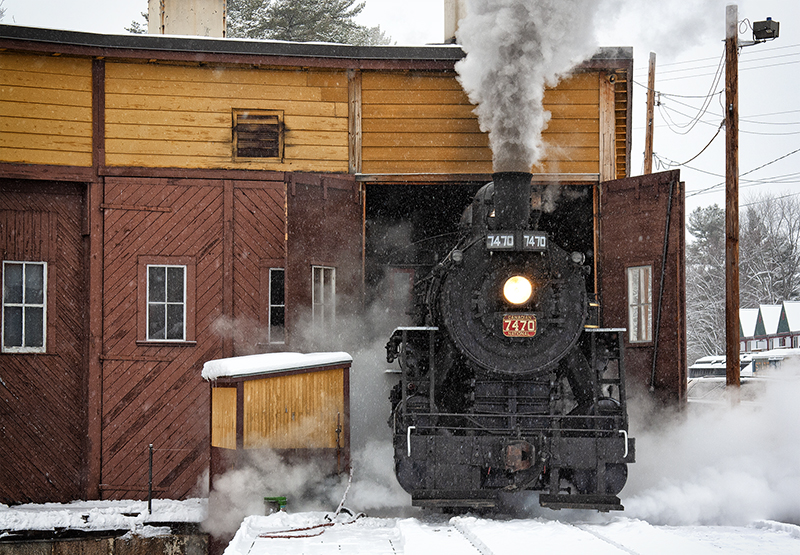
Adirondack Railroad is running the "Cabin Fever Limited" from Utica to Remsen next weekend with a layover at Remsen where they are going to have a big bonfire and hot chocolate. As a late birthday present to myself, since my birthday once again sucked, I bought a ticket to ride topside in their dome car on the trip. Should be fun, I've never ridden in a dome car. I'm curious to see what they'll use for motive power, hopefully they'll use the new M420W that they bought. New year, new locomotive.
Just saw where it was recently reported that two notable PRR passenger cars were scrapped back in October "by accident". The two cars were a PRR P70 coach that had later seen use on both the 1979-1981 Adirondack Railway and the West Shore Railroad, and a PRR BM-70 Railway Post Office that was used in the very last RPO train in the US, both owned by a Jeff Pontius of Penn Valley Railroad LLC. The cars were being stored on a siding at the old Berwick Forge & Fabrication facility (formerly American Car & Foundry) in Berwick, PA that had been shuttered since 1993. The Berwick location has been used as storage for privately-owned passenger cars and locomotives over the year, with Pontius one of those having a valid lease for the location. In 2018, the company doing the leasing of the property changed hands and asked that Pontius move the cars to an adjacent siding, which he complied with. Then in October, contract scrappers came in and cut up the two cars. There was no termination of the lease, there were no eviction notices or requests to remove the cars from the property, Pontius was in good standing with the lease. They were also not rusty, vandalized hulks that could be perceived as an eyesore. In fact, the P70 had just had significant work done to the running gear, including new wheelsets, and had new window glass and interior furnishings on-site awaiting installation. The lessor says that the scrappers accidentally cut up the wrong cars, while the scrappers are saying that they were specifically ordered by the lessor to cut the two PRR cars up.
At the moment, however, Pontius is still trying to get the Berwick Police Department to investigate the matter and give him a police report. It's possible the railroad and industrial park will put pressure on them. He has all the receipts, storage contracts, etc. A case against the guilty party/parties would be ironclad, in a common-sense courtroom. The dilemma he is facing is that even though this appears to be an open-and-shut case for a civil suit for damages, one would have to decide whether to pursue monetary compensation or replacement. Pontius likely wants replacements, not cash. PRR #1361 is being restored not that far away, and Pontius helped with the restoration of #1361 back in the 1980s, and the Railroader's Memorial Museum in Altoona has said they are trying to get an entire consist of P70 coaches to pull behind #1361.
A pretty tragic loss of some good passenger cars with some notable history, and I imagine it had to have been gut-wrenching for Mr. Pontius to learn that his cars were gone.
In reply to NickD :
AFAIK, Danbury still has PRR 6563, which is a BM70m RPO/Baggage car.
Edit: And I see that I misread your post, and that the one that was cut up was not the last one in existence, which makes my comment much less relevant. Never mind.
In reply to 02Pilot :
There is also a BM70 at not far from Berwick at Norfolk Southern's Columbia Yard, still in PRR's MoW Yellow, along with two PRR X29 boxcars. They are not in active use and I know people have tried to dislodge those cars from NS for a few years and never even received a response from NS. If there is legal horsepower behind it, that might be the trick to get NS off of the B70 at the very least, and it wouldn't have far to go. Cape May Seashore Lines has the nearest "available" P70 coaches (actually the last two remaining Pennsylvania-Reading Seashore Line P70s) but they may have to be trucked/"flatcared" out, and there is some dispute on whether they belong to URHS-NJ or CMSL. P70s aren't quite as hard to find as BM70s though.
Pennsylvania-Reading Seashore Lines was a weird jointly operated subsidiary of both the Pennsylvania Railroad and the Reading Company. the two had for years shared a fierce rivalry over the Atlantic City vacation traffic with their two subsidiaries, the West Jersey & Seashore Railroad (PRR) and the Atlantic City Railroad (Reading). Their mainlines ran side by side in many areas like on the Cape May lines, where the trains were in sight of each other for 11 continuous miles, and over the last 5 miles into Cape May the tracks were only 50 feet apart. Trains often exceeded 100mph, with PRR E3s Atlantics and Reading P-3 Vauclain compound Camelback Atlantics leading the charge, and competing crews tried to race each other between stations. Price rate wars and the Great Depression knocked the wind out of the sails for both the WJ&S and the ACRR, and so in 1931 the New Jersey Board of Public Utilities ordered the PRR and Reading to consolidate their operations to prevent a service collapse.
The result was the Pennsylvania-Reading Seashore Lines, which was 2/3rd owned by PRR and 1/3rd owned by Reading. The 2/3rds ownership was granted to PRR because PRR provided the motive power, in the shape of B6 0-6-0s, E3sb and E6 Atlantics, and H6sb, H9s and H10 Consolidations. On times where there was excess traffic, PRR K4 Pacifics, Reading 2-8-0 Camelbacks and Reading G-3 Pacifics were known to fill in. After the steam era, the PRSL was dieselized with new equipment ordered specifically for the PRSL rather than hand-me-down power, and it became an oddity in that it's diesel fleet was entirely built by Baldwin. It owned S-8 and S-12 switchers, some of which had M.U. equipment and 60mph gearing, and DRS-4-4-1500 and AS16 road switchers, most of them equipped with dual control stands, steam heat generators and 70mph (and even 80mph!) gearing. Perhaps the most amusing was a batch of AS16s delivered in '53 which had been ordered by Reading but then turned over to PRSL instead. Being late Baldwin products and intended for use on the Reading, they had conventional electro-mechanical throttles that allowed them to be M.U.ed with other brand locomotives. But that meant that on the all-Baldwin PRSL, whose equipment all had Baldwin air throttles, they were not compatible with existing PRSL Baldwins, making them true misfits among misfits. They were sent back to Baldwin, had Baldwin air throttles installed, and had the dynamic brakes swapped out for a steam generator. The Baldwins ran well into the mid-'60s, at which point they were becoming unreliable and Baldwin had been out of business for a decade. The Baldwins were all replaced in one sweep with EMD GP38-2s, also built with dual control stands.
Airplanes and automobiles not only eroded PRSL's traffic to Atlantic City, but almost all traffic of any sort to Atlantic City, as more distant locations became more easily accessible. It also didn't help that both of PRSL's owners were deep in bankruptcy. Interestingly, the PRSL never went bankrupt, but with both Penn Central and Reading being incorporated into Conrail, PRSL was rolled up as well.

A PRSL Budd RDC-1 and E6 Atlantic #645 at Cape May. E6 Atlantic #460, the famed Lindbergh Engine, actually spent the latter part of her career hauling trains on both the Long Island Rail Road and the Pennsylvania-Reading Seashore Lines before retirement.
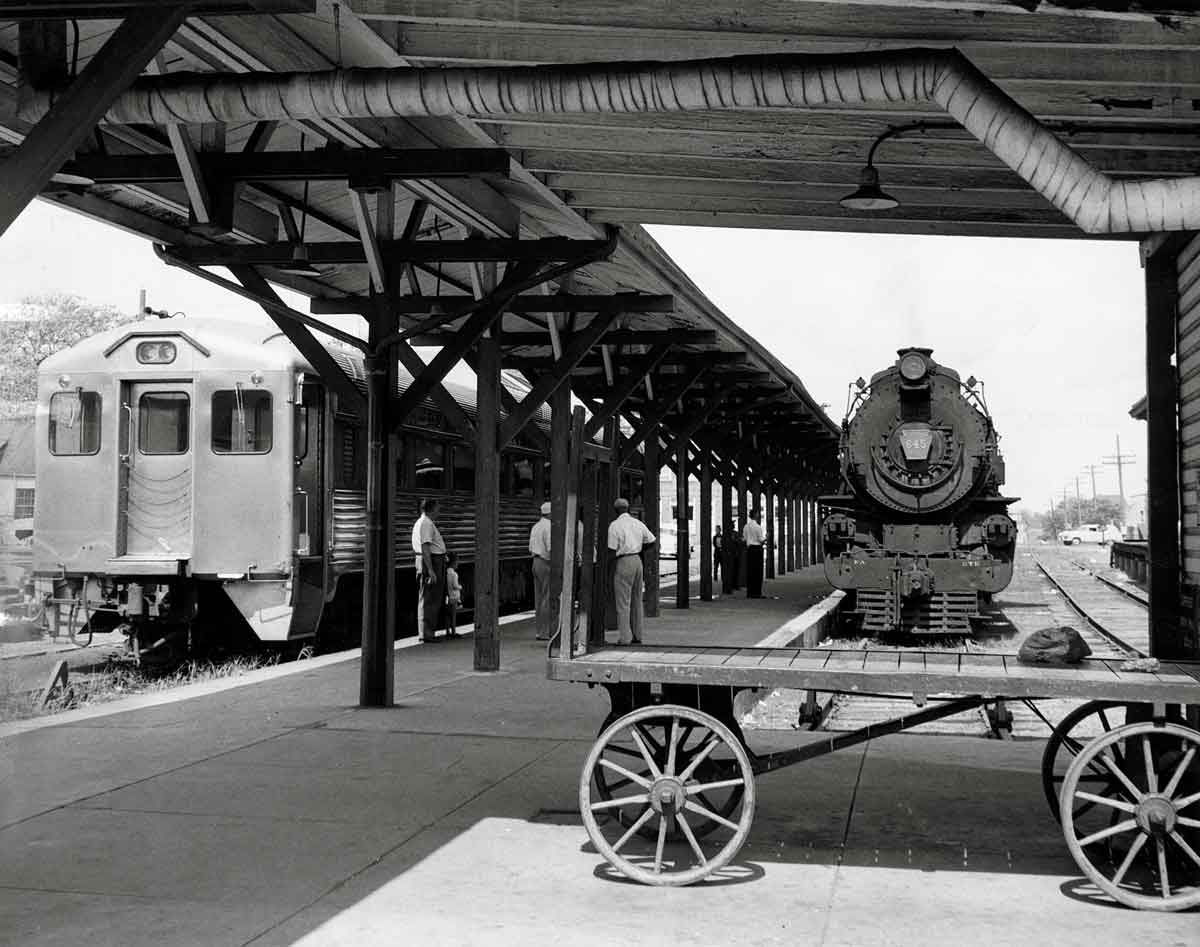
One of the Reading's, ahem, aesthetically-challenged G-3 Pacifics on assignment to the PRSL. The G-3s were the last new Pacifics built in the US, in 1948, and were mechanically quite impressive machines, with 80" drivers and 260psi boilers. They were fairly quickly bumped off of main service and spent the last few years running on the PRSL, just trying to get their money's worth out of them. When Reading was running the Iron Horse Rambles with T-1s #2100, #2102, and #2124, the G-3s were still sitting in storage waiting for equipment trusts to run out, and it's a bit sad that the Reading didn't fire at least one of them up and maybe save it. Supposedly photographer Don Wood tried to get Reading to sell him one for preservation, but to no avail (Wood also tried to get CNJ to preserve 4-6-0 Camelback #774 to the same effect)

Freshly arrived Baldwin diesels and K4 #5495 at Cold Harbor. The #5495 was the engine used for the class photo of the K4s and was one of only a few to be equipped with a one-piece cast frame. It also has the post-war headlight/generator configuration (headlight on top of the smokebox, generator on the shelf below) but has the pre-war slatted pilot instead of the post-war cast-steel pilot.

A lone commuter detrains from a PRSL train at the Gardens Station in Ocean City. The power is a PRR G5 4-6-0
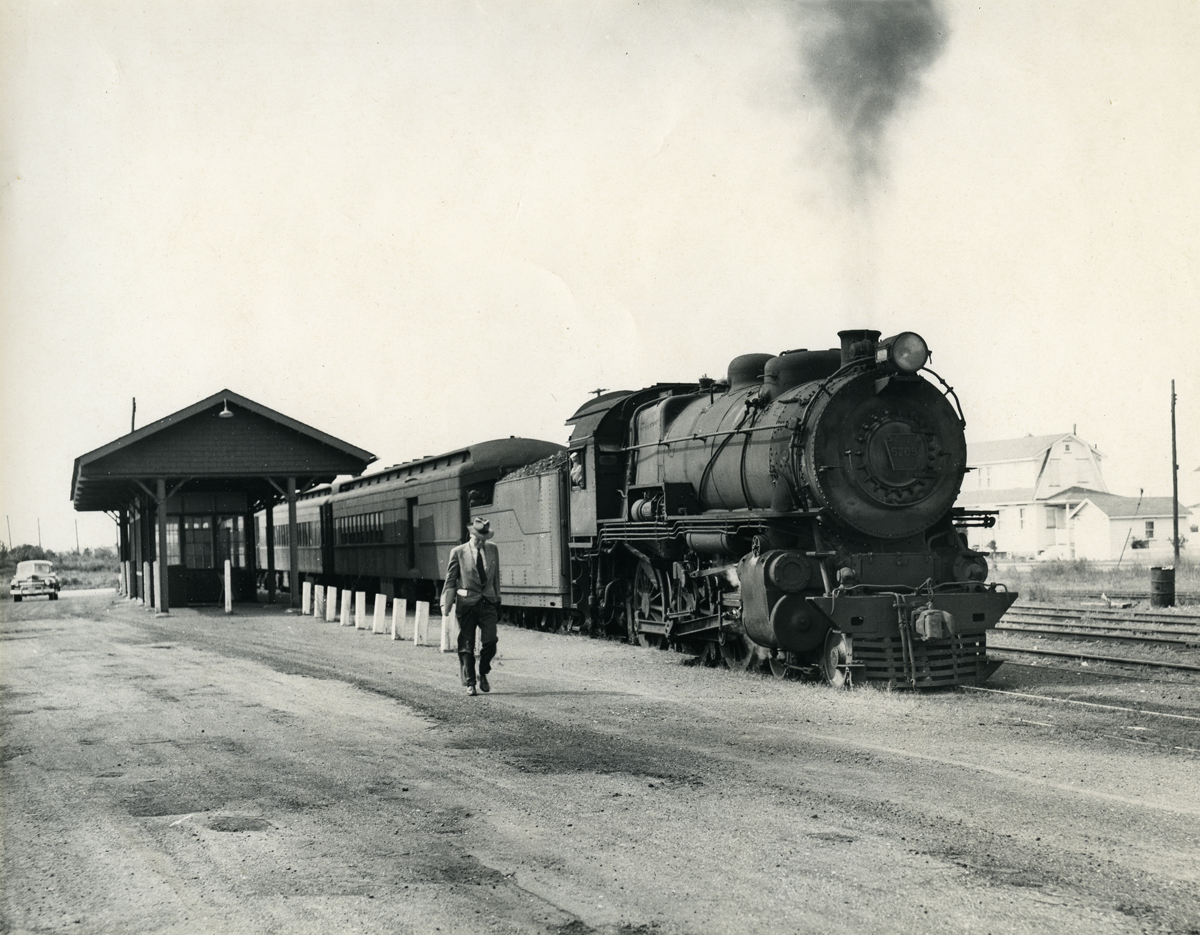
Like the PRR, the New York Central also heavily utilized track pans for watering their locomotives on the fly. In fact, the New York Central & Hudson River, as it was known at the time, installed the first track pans in the United States in 1870 at Montrose, NY. It was the PRR that perfected the tender scoop design in 1894 though, as early designs had issues with the scoops either being torn off by the sudden load or just skipping across the top of the water. A few other northeastern railroads, like the B&O, New Haven, and CNJ tinkered with them but never to the extent of the Pennsy or the Central. What's baffling is that the railroads that used track pans all had to contend with cold weather and keeping the pans thawed, while those railroads that used canteen cars for extended running, like the MoPac and Frisco and N&W, were all in warmer climates but preferred to use canteen cars. Track pans never extended north of the border, for obvious reasons of freezing, nor did they see use in Mexico. The NYC retired their last last pan at Lawton, Michigan in 1954, while the PRR pulled its final pan from service near Hawstone, Pennsylvania in 1956. In England, track pans remained in use through the 1970s for diesels to refill their steam generators.
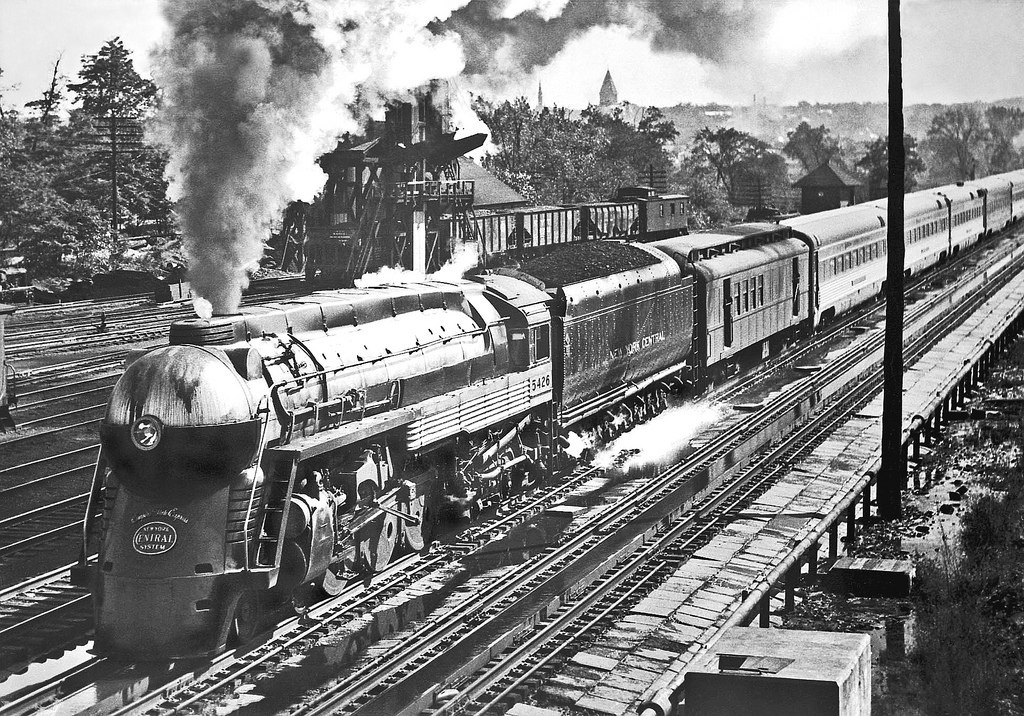
One of the two streamlined J-3a Hudsons for the Empire State Express picks up water from a track pan. Already the stainless steel skirting over the firebox has been removed by maintenance crews, and the stainless steel-clad tenders has been swapped out for a conventional-bodied "PT" centipede tender. There's also an old clerestory roof RPO baggage car breaking up the streamlined consist. NYC corporate photographer Ed Nowak said that the mixing of clerestory roof cars, smooth-side cars, and stainless-steel cars in consists vexed him to no end and he once opined to a yardmaster that he wished that they would build more homogenized consists, and he said the yardmaster just about tore his head off, screaming "Do you know how much extra work that would be?" He never asked again.
A New York Central "PT" centipede tender scooping water on the fly, with a photographer having added arrows pointing to the expansion chamber vents. This angle also shows how the coal bunker stretches at least 2/3rds of the tender. PRR tenders with scoops had fairly conventional ratios of coal bunker to water cistern, but New York Central realized that since they could pick up water on the fly in multiple places, they didn't need a huge water cistern, and by making the coal bunker massive, they could cut down on coaling stops. It worked great when steam was in the primary power, as NYC steam could run long distances without any fueling stops whatsoever, but it did cause problems in the transitional era as the NYC took out track pans and thinned down the water tower locations. Anything with a PT tender, including those fairly new Niagaras, was stuck on passenger service or mail trains because they could no longer make it from water tower to water tower if they were assigned to any real tonnage.
There was never any sort of a level gauge on tenders, and a level gauge wouldn't have worked when filling with track pans due to the turbulence, so when topping off on track pans, they would often overfill the tender, resulting in it blowing out of the expansion chamber vents or violently exploding out of the hatches on the top of the cistern in a huge geyser. When there wasn't a bunch of baggage or express cars on the front, passengers in the first two or three cars were often instructed to keep their windows shut so that they weren't suddenly drenched by water blowing back in the windows. There are also stories, not sure if they are urban legends or not, of hobos catching a ride on a freight train in the winter, and riding between the cars just a car or two back from the engine, who were found frozen to death at a terminal after having been inundated by a track pan. Not sure how true or not, but I could certainly see them getting knocked off by the spray and then being run over.
Other issues included crews lowering the scoop to early or raising it too late, which would cause the scoop to get ripped off by the pan and damage the tender and the pan. There were signs and lights to mark where they began and ended, but in the heat of the moment, crews misjudged sometimes. Also, crews were supposed to reduce speed when scooping up water, because it was found that when picking up water at excessive speeds, the water would hit the rear of the tender at high speeds and explode out the top hatches, and it wouldn't actually pick up any water. Freezing was always an issue in colder climates, and so the pump stations built lineside to fill the pans had steam boilers inside, which heated the water to keep it from freezing. Also, on doubleheaded trains, if both engines were picking up from the same pan, the lead engine would often deplete the pan and the second engine would barely pick up any water.
When I attended the NY State Model Train Fair at Syracuse this winter, I learned that Rome, NY was actually a site for New York Central track pans. They were on the east side of the city, about a half mile out past the station. This photo is of the pans at Rome and the building in the distance on the left is the water tank and the steam heating plant.
Ed Nowak told a story about how for the NYC's corporate newsletter they wanted a funny shot of him or his assistant standing trackside and getting sprayed by a locomotive as it went by and scooped up water. Talking with the operations crews through revealed some serious safety concerns, as someone standing fairly close to the tracks as it went by at speed, and there existed the possibility of them getting knocked over and striking their head, pieces of gravel being thrown at them, or the turbulence from the train sucking them under the wheels. So, instead, they grabbed photos of the train picking up water, then flipped a coin over who was going to get wet (I believe Nowak lost) and then they got a photo of them being drenched by water being tossed from a couple buckets brandished by track crews just out of frame.

In reply to NickD :
Wow, I don't think I ever knew about those track pans. That's a pretty ingenious idea!
NickD said:In reply to DjGreggieP :
I presume you mean diesel locomotives. I can only speak for the US, as well, I'm not familiar with foreign countries.
If you count museum/tourist lines, the oldest is ARMCO Steel B-73. This unusual machine is a 78-ton Westinghouse "oil-electric" built in 1930. Originally constructed for US Steel's wire mill in Cuyahoga, it had a 300hp Westinghouse diesel engine, which was replaced with a 400hp Hamilton engine when sold to ARMCO Steel in 1942. ARMCO donated it to the PA Trolley Museum in 1970 and it operates there on occasion, mostly moving their collection around or during catenary power outages.
Funny that ARMCO Steel B-73 got mentioned, because Illinois Railway Museum has announced that they are raising money to construct a shelter for ARMCO Steel B-71, which is a similar Westinghouse "high-visibility cab" switcher built in 1930. Strangely, B-71 was built after B-73, but was still built in 1930. The Westinghouse diesel engines in these was actually a British design by Beardmore that was built under license by Westinghouse, and Baldwin Locomotive Works built the bodies for them. Like the B-73, the B-71 was also re-engined with a Hamilton engine in 1942. It then went to Michigan Railway Historical Society and then to the Cadillac & Lake City Railroad where it last operated in 1973. Around 1985 it went to St. Paul to the Minnesota Transportation Museum (which just had an ugly meeting where essentially the entire operating and mechanical department just packed their E36 M3 and left) and sat there until 2012. At some point the Gopher State Railroad Museum wanted to buy it but that did not happen, and Youngstown Steel Heritage Center also tried to have it moved there and gave up. IRM then swooped in to save it, because there was talk of it being scrapped, and moved it to Union, IL. IRM also owns an ARMCO Lima-Hamilton switcher, which will be moved under the same shelter as ARMCO B-71
There is also ARMCO B-70 at the Southeast Railway Museum in Duluth, Georgia, an even older Westinghouse box-cab switcher built in 1929. Mechanically it was identical to the B-71 and B-73, and unlike both of them it still retains it's Beardmore-based Westinghouse engine. It also has not operated since the 1960s, and is in pretty rough shape since it was partially disassembled for an aborted restoration and then left out in the back forty exposed to the elements. It has been moved into their shop area to prevent further deterioration but has not received any actual work.
ARMCO also had B-72, which came between B-70 and B-73 (remember, B-71 was built after the B-73) and was a steeple-cab design that was again, mechanically identical to the others. The B-72 was also re-engined in the '40s, but rather than the Hamilton engines used in B-71 and B-73, it used a Cooper-Bessemer engine. B-72 is long gone though, and no photos of this early machine seem to exist on the internet either.
My favorite weird little switcher is still the EMC/EMD Model 40. Built by Electro Motive Corporation, and then Electro-Motive Division, from 1940-1943 the Model 40 was an industrial critter. It had two rigid-mounted axles, weighed 44 tons, and had two Detroit 6-71 engines tucked under each hood, running a common generator under the cab. Because the two engines were both hooked to the same shaft with, one engine was clockwise rotation while the other was counter-clockwise rotation. The Model 40 was not at all successful, partially because the rigid-mounted axles meant that it did not negotiate sharp curvatures well. EMC/EMD sold only 11 over 3 years, but 8 of them survive to this day and several are still in operation. The Walkersville Southern, in Walkersville, Maryland, has the #101 which was still routinely used to haul passengers until fairly recently, and is planned to return to service once they successfully overhaul the one 6-71 engine that began ailing.
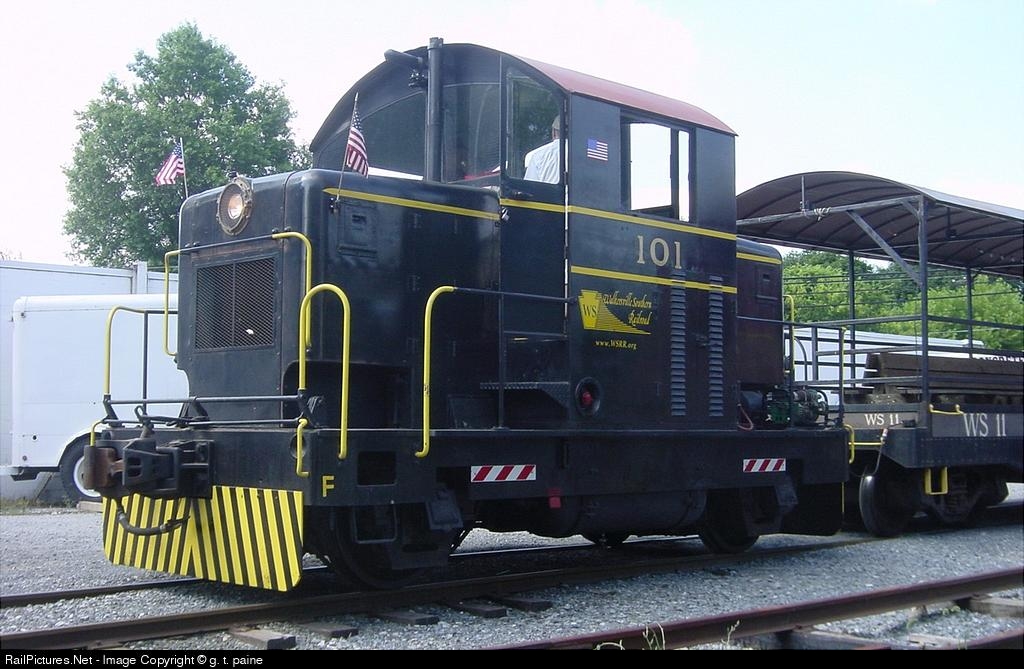
You'll need to log in to post.